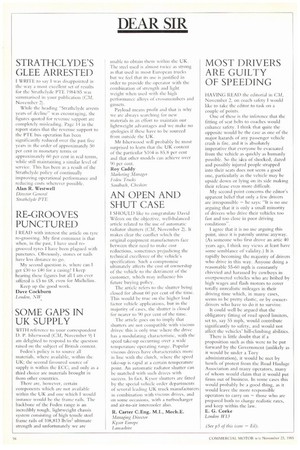AN OPEN AND SHUT CASE
Page 96

If you've noticed an error in this article please click here to report it so we can fix it.
I SHOULD like to congratulate David Wilcox on the objective, well-balanced article related to the use of automatic radiator shutters (CM, November 2). It makes clear the conflict which the original equipment manufacturers face between their need to make cost reductions, sometimes prejudicing the technical excellence of the vehicle's specification. Such a compromise ultimately affects the cost of ownership of the vehicle to the detriment of the customer, which may influence his future buying policy.
The article refers to the shutter being closed for about 60 per cent of the time. This would be true on the higher load factor vehicle applications, but in the majority of cases, the shutter is closed For nearer to 90 per cent of the time.
The article goes on to imply that shutters are not compatible with viscous drives: this is only true where the drive has a modulating characteristic, with the speed take-up occurring over a wide temperature operating range. Popular viscous drives have characteristics more in line with the clutch, where the speed take-up is rapid at a certain temperature point. An automatic radiator shutter can be matched with such drives with success. In fact., Kysor shutters are fitted by the special vehicle order departments of several leading UK truck manufacturers in combination with viscous drives, and on some occasions, with a turbocharger and air-to-air interc(x)ler also.
R. Carter C.Eng. M.1., Mech.E. Managim Director Kysor Europe Lancashire












































































































































